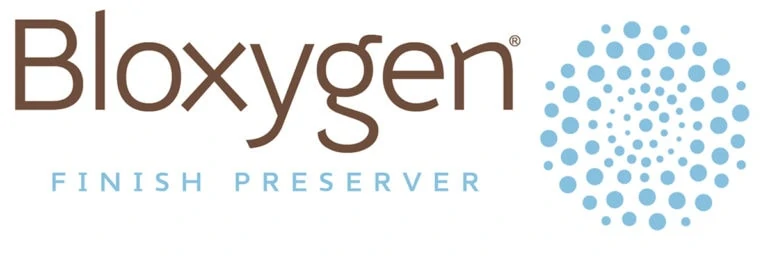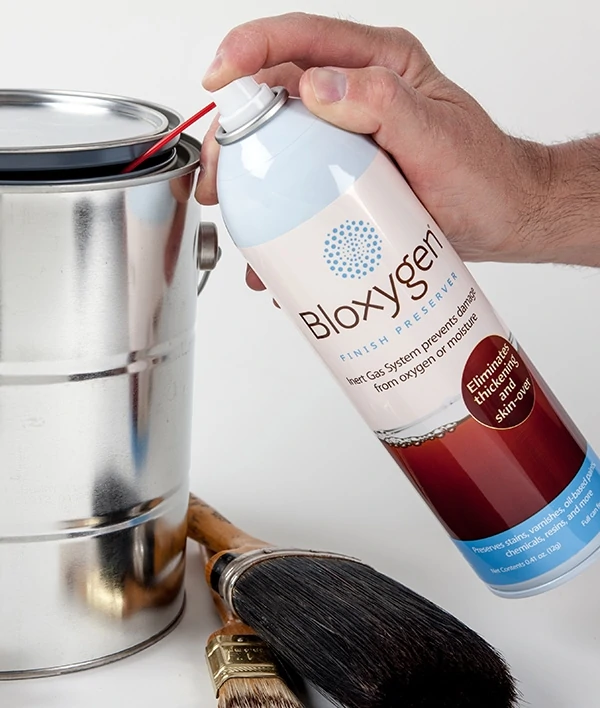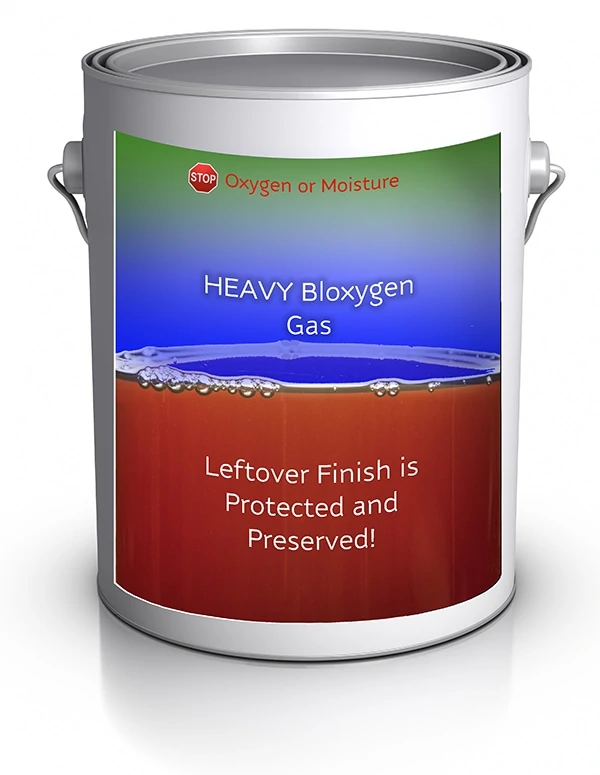“We’ve all been there. You work for many hours on building your project, take the time to sand and clean it, get out your best brush, put your gloves on only to realize that the leftover varnish you intended to use has skinned over and hardened in the can. This can result in frustration, a hazardous waste disposal issue, and more time and expense. A small company in California has solved this problem. Using Argon, an inert gas that occurs naturally in small quantities in our atmosphere, their product can prevent the skin and the goo and let you use every drop of finish. The company’s product is called Bloxygen and its patented and made in the USA. At about $0.16 per use, it’s not that expensive either.
We spoke with Steven Zawalick, the inventor and owner, about their gas and learned some interesting things. The reason oil-based finishes skin over during storage is the oxygen in our atmosphere. It’s what cross-links and cures the finish. Bloxygen’s Argon is heavier than oxygen and purging the headspace of your storage container is as simple as a 2-4 second squirt of gas, sealing the lid, and storing your finish. Next time, it’ll be ready as if new. The Bloxygen can comes with a small extension tube to make it easier to get the gas into the can and quickly seal the lid. Steve said that almost every paint manufacturer has tested and approved of Bloxygen, but few sell it. It seems that the paint industry is happy to sell you more paint, but not so keen on making that paint last longer. According to the EPA, the US alone is responsible for about 65 to 69 million gallons of paint tossed into landfills each year and about 15% of that is oil-based. For just the oil-based paint, that’s a line of quart cans from Los Angeles to New York tossed out each year. Each can of Bloxygen will save about 75 quart cans.
HOW DOES IT WORK? Bloxygen uses ultra-pure Argon, a powerful and natural inert gas to drive the oxygen and moisture out of your container. Simply blow the oxygen out of your container with Bloxygen and then seal the lid. The heavy, inert Bloxygen gas sinks down to block oxygen from the liquid surface. Because Bloxygen is heavier than air, it will separate the liquid surface from any air that may remain in the container.
What is Argon? Bloxygen uses ultra-pure Argon. Argon is one of our elements. It’s used in double pane windows, welding, and pre-packaged salads. Argon is a natural component of our air and the third most common gas on Earth at (about 1% of our air). A full can, because it contains only a gas, feels empty. The gas is non-toxic, non-flammable, and inert. Deliberately misusing Bloxygen by concentrating and inhaling it can result in rapid suffocation, asphyxiation, and perhaps death due to lack of oxygen. There are no CFCs, VOCs, or added propellents. It’s totally natural.
Steven mentioned that they have a YouTube channel with a few videos that explain how all this works and even some finishing best practices. You can check that out from their website at www.bloxygen.com.”





